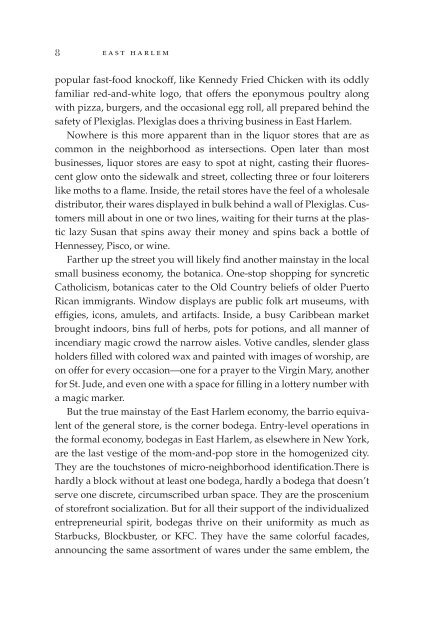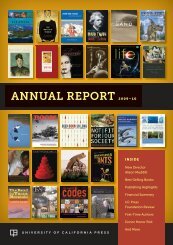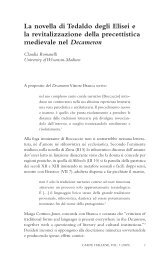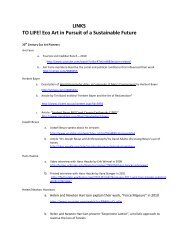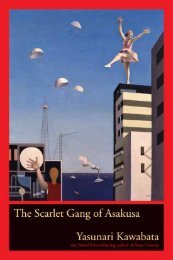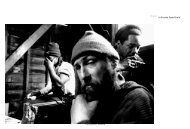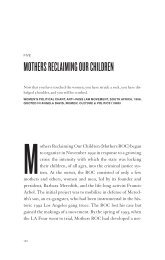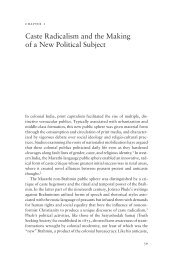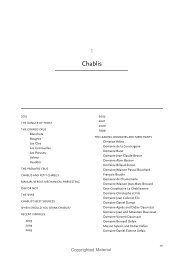Read Chapter 1 (PDF) - University of California Press
Read Chapter 1 (PDF) - University of California Press
Read Chapter 1 (PDF) - University of California Press
Create successful ePaper yourself
Turn your PDF publications into a flip-book with our unique Google optimized e-Paper software.
8<br />
east harlem<br />
popular fast-food knock<strong>of</strong>f, like Kennedy Fried Chicken with its oddly<br />
familiar red-and-white logo, that <strong>of</strong>fers the eponymous poultry along<br />
with pizza, burgers, and the occasional egg roll, all prepared behind the<br />
safety <strong>of</strong> Plexiglas. Plexiglas does a thriving business in East Harlem.<br />
Nowhere is this more apparent than in the liquor stores that are as<br />
common in the neighborhood as intersections. Open later than most<br />
businesses, liquor stores are easy to spot at night, casting their fluorescent<br />
glow onto the sidewalk and street, collecting three or four loiterers<br />
like moths to a flame. Inside, the retail stores have the feel <strong>of</strong> a wholesale<br />
distributor, their wares displayed in bulk behind a wall <strong>of</strong> Plexiglas. Customers<br />
mill about in one or two lines, waiting for their turns at the plastic<br />
lazy Susan that spins away their money and spins back a bottle <strong>of</strong><br />
Hennessey, Pisco, or wine.<br />
Farther up the street you will likely find another mainstay in the local<br />
small business economy, the botanica. One-stop shopping for syncretic<br />
Catholicism, botanicas cater to the Old Country beliefs <strong>of</strong> older Puerto<br />
Rican immigrants. Window displays are public folk art museums, with<br />
effigies, icons, amulets, and artifacts. Inside, a busy Caribbean market<br />
brought indoors, bins full <strong>of</strong> herbs, pots for potions, and all manner <strong>of</strong><br />
incendiary magic crowd the narrow aisles. Votive candles, slender glass<br />
holders filled with colored wax and painted with images <strong>of</strong> worship, are<br />
on <strong>of</strong>fer for every occasion—one for a prayer to the Virgin Mary, another<br />
for St. Jude, and even one with a space for filling in a lottery number with<br />
a magic marker.<br />
But the true mainstay <strong>of</strong> the East Harlem economy, the barrio equivalent<br />
<strong>of</strong> the general store, is the corner bodega. Entry-level operations in<br />
the formal economy, bodegas in East Harlem, as elsewhere in New York,<br />
are the last vestige <strong>of</strong> the mom-and-pop store in the homogenized city.<br />
They are the touchstones <strong>of</strong> micro-neighborhood identification.There is<br />
hardly a block without at least one bodega, hardly a bodega that doesn’t<br />
serve one discrete, circumscribed urban space. They are the proscenium<br />
<strong>of</strong> storefront socialization. But for all their support <strong>of</strong> the individualized<br />
entrepreneurial spirit, bodegas thrive on their uniformity as much as<br />
Starbucks, Blockbuster, or KFC. They have the same colorful facades,<br />
announcing the same assortment <strong>of</strong> wares under the same emblem, the


